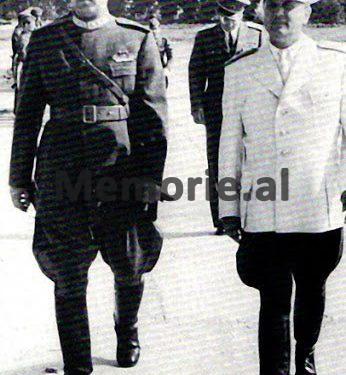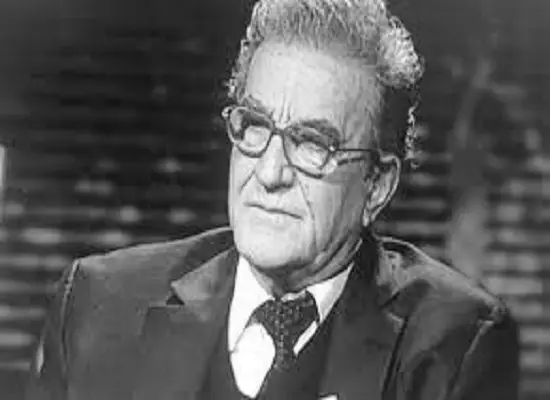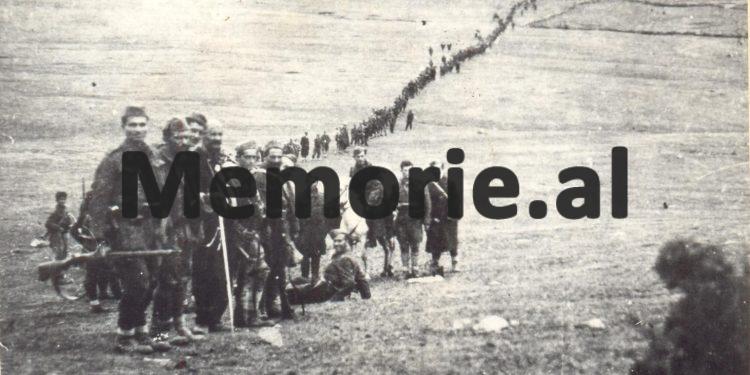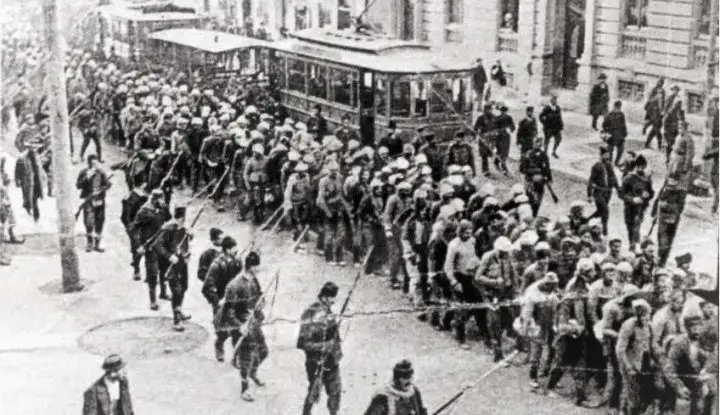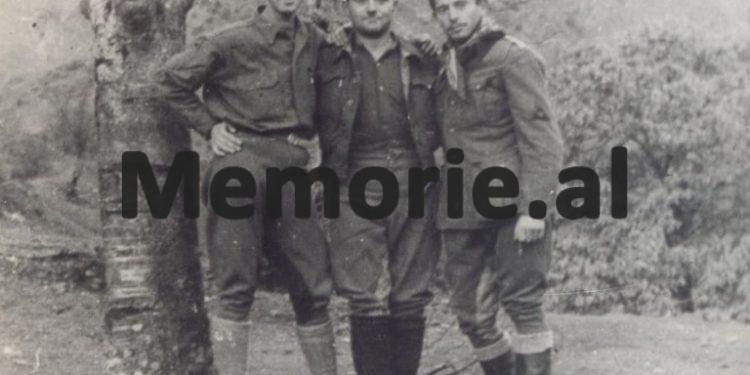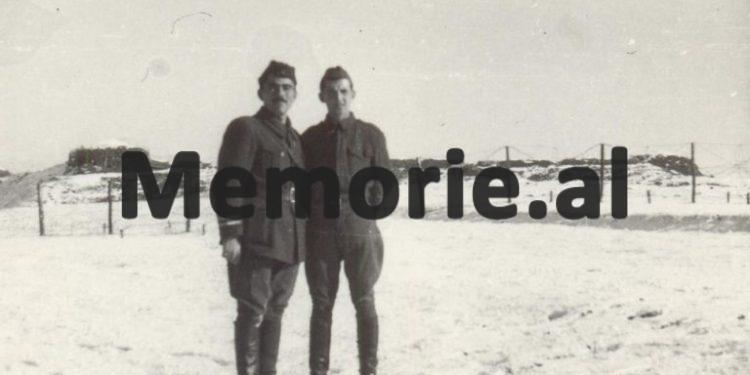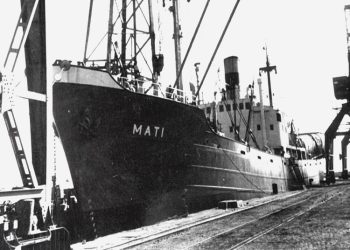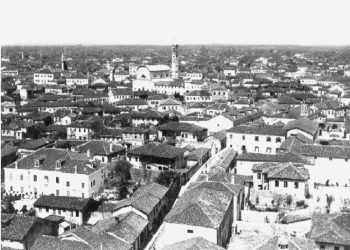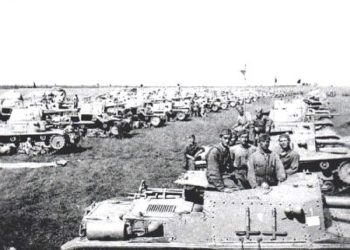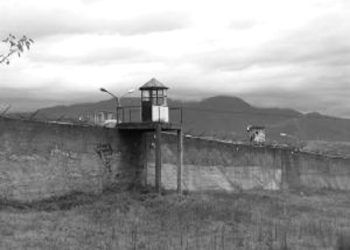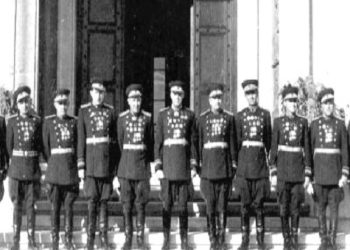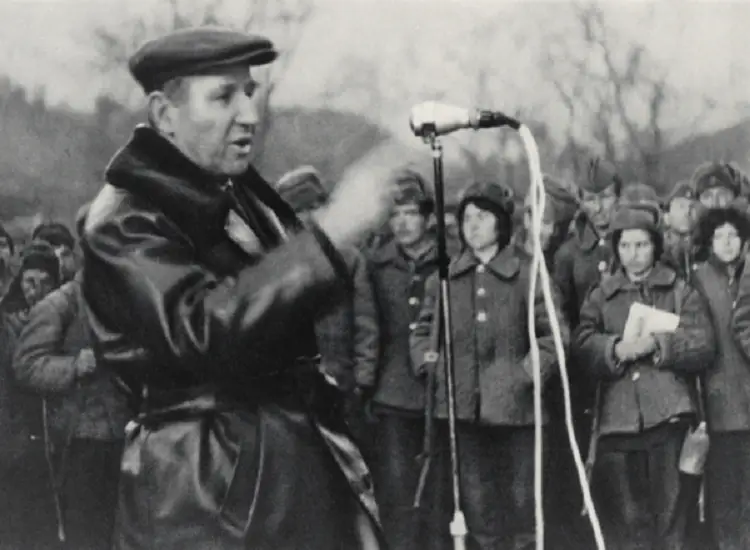By Dr. Uran Butka
– The well-known researcher and historian, Dr. Uran Butka publishes the documents by order of Enver Hoxha, where he writes: “To annihilate without mercy Albanian nationalists and reactionaries, inside and outside the borders of Yugoslavia, without tolerating…”!
Memorie.al / The massacre of Tivari, or more broadly, the tragedy of Tivari, is one of the biggest, bloodiest and most treacherous atrocities committed against Albanians. It has been spoken and written about it in a one-sided and incomplete way, because the direct participation of the communist government of Albania in this massacre has not been taken into consideration, for lack of data and documents, but also for hiding the truth. The Yugoslav state, although it was the designer and the perpetrator of the massacre, has accepted it, even if it was accidental and reckless, but still it has drawn some conclusions and some responsibilities. While the Albanian state, implicated in this carnage, caused against its own people, has been silent for half a century, covering it with oblivion and complete irresponsibility, especially since the first act of this tragedy, where they were massacred and killed with thousands of innocent Albanians, was played within the territory of Albania. This massacre was planned and carried out by the Yugoslav communist state in agreement and cooperation with the Albanian communist government.
The political and military platform of this anti-Albanian action was the infamous project of Čubrilović of March 7, 1937 and November 3, 1944, which, unfortunately, also became the platform of the National Liberation Movement of Yugoslavia: “There are two ways of ethnic cleansing of Albanians : to eradicate or relocate them”. For Čubrilović and those who carried out massive genocide against Albanians, this was only one side of the coin. The other side was the colonization of empty Albanian lands, with Serbian, Herzegovina, Montenegrin and Macedonian colonists through the army and national liberation councils.
These anti-Albanian and anti-human criminal projects became a concrete program and action of the Yugoslav Communist Party and the Yugoslav National Liberation Movement against Albanians. At the beginning of November 1944, the commands of the Yugoslav National Liberation Army were given, by the highest party and military bodies of Serbia, the directive to “kill at least 50% of the Albanian inhabitants” (Archive of Kosovo, F. OKKM k. 10/29, 335 no. 1)
PHOTO GALLERY
This genocide was manifested openly in the form of mass murders of Kosovo Albanians and other Albanians by the forces of the National Liberation Army of Yugoslavia, of the OZN and by the Chetnik-Drazist detachments, as well as the mass displacement of Albanians from the lands of theirs. The Yugoslav Communist Party propagated this war against the Albanians as a war against the “great Albanian reaction”, against the “collaborators” of Nazi-fascism, etc. Kosovo was considered and treated as reactionary, counter-revolutionary, irredentist, that had to be subjugated and alienated ethnically.
But, in the conditions of the Second War and immediately after it, this subjugation and complete ethnic cleansing was extremely difficult for the political and military leadership of Yugoslavia, because the people of Kosovo and other Albanian countries were all on their feet, aware and armed to protect the Albanian being and the national borders, despite the policies and anti-Albanian and criminal practices of the Yugoslav Communist Party and the National Liberation Army of Yugoslavia. Tito and the Yugoslav leadership were not interested in another war. They could achieve this more easily and stealthily, with the help of propaganda and the weapons of the National Liberation Army of Albania.
This cooperation between the National Liberation Army of Yugoslavia and the National Liberation Army of Albania to fight together, to subdue the anti-Serb reaction in Kosovo and to reoccupy it with the help of the military forces of Albania, he requested as early as March 1944, the commander of the II Assault Corps of Yugoslavia, Lieutenant-General Peko Dapcevic.
Tito, in his capacity as the commander-in-chief of the National Liberation Army of Yugoslavia, asked Enver Hoxha to transfer the formations of the National Liberation Army of Albania to Kosovo and Yugoslavia, to fight against “invaders and reaction”. This request of the General Command of the Yugoslav National Liberation Army, formulated at the end of May, was repeated in July and August of 1944. The Yugoslav Military Mission in Albania of seven soldiers, headed by Colonel Velimir Stoinič, coordinated the actions of both parties. This request was made again on August 26, 1944 by the Headquarters of the U.N.Ç.J. for Kosovo and the Dukagjin Plain, signed by the commander of this headquarters, Fadil Hoxha and commissioner Boshko Çakiç. (FA Archive, Correspondence Headquarters Fund).
The Albanian side was ready. After killing thousands of nationalists of the Front, Legality and northern leaders during the civil war in Albania (1943-1944), the commander-in-chief of UNÇSH, Enver Hoxha, on September 12, 1944, ordered the First Corps to prepare and launch immediately two brigades to Kosovo. (Documents, Correspondence Headquarters, vol. II)
On this same date, Enver Hoxha’s mentor, Miladin Popovic, wrote to Liri Gegë, the plenipotentiary of the KPSH Central Committee for the 1st Corps: “Notify Pavle (Pavle Jovicevich, my mark U.B.) that the two Albanian brigades of soon they will take direction for Kosovo. Just don’t deconspiracy”! (AQSH, Fund 14) The sending of the partisan brigades of Albania to Kosovo was considered conspiratorial even for the British, although they were allies and helped the National Liberation War in Albania and Yugoslavia. Enver Hoxha ordered Dali Ndreu, the commander of Corparmata I:
“Don’t tell the British the objective of the V and III brigades, which will go to Kosovo”. (AQS, P.14). Powerful nationalist political and military organizations were created and operated in Kosovo, such as the National Front, the Irredentist Movement, the Second League of Prizren, and then the “Besa Kombëtare” and the Albanian National-Democratic Organization (ONDSH), which had almost all the Albanian people of Kosovo and other Albanian provinces. Muharrem Bajraktari and his nationalist forces also collaborated with them. Under these conditions, Josif Broz Tito called the brigades and divisions of the N.Ç Army of Albania “to fight against the enemy and the reaction”, but he mainly used them in the fight against the “Albanian reaction”. Enver Hoxha knew well why the national liberation brigades of Albania were called to Kosovo, so as an obedient vassal and aware of what he was doing, he ordered the brigades of the 1st Division: “To annihilate without mercy Albanian nationalists and reactionaries, inside and outside the borders without showed not the slightest tolerance.” (Archive of FA, file 45, year 1944)
PHOTO GALLERY
In November 1944, the 5th Division, which included the III, V and XXV Brigades, and the VI Division (VI, VII, VIII and XXII Brigades) were also engaged in this war, after returning from Sanjak and Bosnia, where they fought against the Germans. The political commissar, Ramiz Alia, says in an interview that he was in Bosnia when the massacre happened. It’s not true. On March 3, 1945, he and the 5th Division were in Mitrovica, then in all of Kosovo. (Document dated 3.03.1945 of the General Staff)
The V and VI divisions of Albania were placed under the orders of the V Army of the N.Ç Army. Yugoslavs. In the action order of the 5th Army of Yugoslavia, the divisions of Albania were also included:
“All the reactionary forces that you will meet be surrounded and crushed at all costs…! Disarm suspicious people and those who don’t want to mobilize willingly, burn the houses of traitors who resist and build a fortress…! Seize the property of fugitive criminals. It should be pointed out to the neighborhoods you pass through that the neighborhood that becomes a refuge for bloodthirsty people will be punished…”! (AQSH, Fund.181, d.45). The orders for action against the forces of Adem Voca and Shaban Polluzha, who refused to leave Kosovo, at the time when they had started the massacres against the Albanian population in Mitrovica and Drenica, were given, on February 1 and February 5, 1945, by the commander of the Operational Headquarters of Kosmet, colonel Fadil Hoxha and political commissar, lieutenant colonel Kristo Filipovic. (Historical archive of Yugoslavia, c.1411)
The Drenica massacre and the undoing of the 7th Kosovar Brigade that left for Srem were the prologue to the Tivar massacre. On February 8, 1945, military power was declared by order of the supreme commander of the UNC of Yugoslavia, Josif Broz Tito. Divisions of the U.N.Ç. of Albania became part of the establishment of the military regime in Kosovo, for the suppression of the Kosovar resistance, for the Yugoslav reconquest of Kosovo and the strengthening of the Yugoslav power. They stayed in Kosovo and the other Albanian territories even after the Germans had left Kosovo and Yugoslavia, from February 1945 until December 1945, that is, for 10 months, until Kosovo and the other Albanian territories became part of Yugoslavia and until the elections were held, where the National-Liberation Front of Yugoslavia won.
We confirm this with the Radiogram of Reiz Malila, the deputy commissioner of the Vth Division: “On the occasion of the elections that will take place on January 11, 1945 here in Kosovo, hold special conferences with the Kosovars. On Election Day, deploy armed forces not close to polling stations, but ready for anything unexpected. The backlash may try to sabotage the election. So be careful Period.”
The greatest help for the recruitment of Albanians, but also for the surrender of hundreds of deserters, who fled from the Yugoslav army and surrendered in good faith to the brigades and battalions of the 5th and 6th Divisions of the National Army. of Albania, gave the commands of the divisions and brigades of the Army N.Ç. of Albania, which were placed under the orders of the Yugoslav General Command. As it has already been revealed from archival documents, the 5th and 6th Divisions of Albania were in Kosovo, during the months of March and April of 1945, when the violent mobilization of the Albanian population in Kosovo and other Albanian territories took place and when the three columns (echelons) with Albanian recruits left for Tivar on March 24-27, 1945, and the other three columns on April 19-24, 1945.
The close cooperation and implication of the divisions and brigades of the N.Ç Army of Albania for the mobilization of Albanian recruits and their delivery to the Yugoslav army, is evident and documented. We have in our hands the archival documents with the radiograms of the V and VI Division headquarters, signed by the Political Commissar Ramiz Alia and the commanders Gjin Marku, Rahman Parllaku, etc., sent to the General Command of the Army N.Ç. of Albania, during the months of March-April 1945 and onwards, as well as the name lists of refugees and Albanian volunteers from Kosovo, which were submitted by the headquarters of the V and VI Divisions to the Yugoslav Army.
The first list contains 190 people, mostly Albanian volunteers submitted by the prefectures of Mitrovica and Peja. The second list contains 104 names of Albanian soldiers who escaped from the Yugoslav army, but also of Albanian volunteers who joined the 5th Division of Albania. The third list, attached, contains 131 Albanian volunteers, surrendered. (AQSH, P.14, d.206, v. 1945). Likewise, the list of the VI Division and the partisan brigades of Albania, who called on the Albanians of Kosovo to join them, but who treacherously handed them over to the Yugoslav army.
Here is Enver Hoxha’s answer:
“The fugitives handed over to your Division; send them to the 52nd Division of Serbia”. (AQSH, P.206, v.1945). As a result of this interdependent military interaction, Kosovo Albanian volunteers and mobilized, who believed in the calls of the Command of the V and VI Divisions of Albania, treacherously surrendered to OZNA and the Yugoslav Military Command and ended up as meat for cannon in the death columns, which the Yugoslav army removed from Kosovo and sent to be annihilated in Tivar or further.
Several battalions of the 46th Division and a battalion of the 27th Serbian Brigade were assigned to accompany them, as well as a group of 50 soldiers from the 4th Army, then from the 10th Montenegrin Brigade, which showed how important had dedicated the Yugoslav authorities to this march, which was supposed to end in a slaughterhouse, where the hosts and the attendants themselves would participate. Yugoslav military source data show that 13,323 Albanian recruits were mobilized and sent to the Adriatic front. There were no Serbian, Montenegrin or Macedonian recruits. Why? It is known, to annihilate only Albanians. Why did they pass through the territory of Albania, when they had other routes to Istria?! To annihilate them together with the Albanian army. The Albanian government, first, allowed the columns of the Yugoslav army to enter and pass through the territory of Albania, outside of any control and to act as their interest wanted. “The party and state leadership of Albania, headed by Enver Hoxha, is the cause of the pre-prepared massacre of Tivari. It allowed the mobilized Albanians, without any weapon in hand, to pass through the Albanian territory, through the road of death, called the ‘Great Albanian Golgotha'” – stated the well-known historian and activist, Zekeria Cana.
From the report of the headquarters of the Fourth Column of the Yugoslav Army, dated April 8, 1945: “The echelon went well until Kukës. In the vicinity of Kukës, an incident occurred, when one of the group of the convoy threw a bomb at our guard. In which case a mess was caused and, in this mess, a group of 10 people managed to escape. Thus, running away, he came across the Albanian army patrol, which stopped him and called him to surrender. To this call, they did not respond, but continued to run away. The Albanian soldiers opened fire on them and killed two people on the spot, wounded two others, who later also died. (War Archive of Yugoslavia, c. 1411)
As can be clearly seen from this document, the annihilation of Kosovo Albanian recruits was carried out in collaboration with the military forces of Yugoslavia and Albania, in this case within the territory of the Republic of Albania. In a document of the Foreign Ministry of Albania we read: “Thousands of innocent Kosovars were shot en masse, illegally and without trial, by the bodies of the UDB. Koci Xoxe took part in these unprecedented massacres against the population of Kosovo, at the beginning of 1945, when, in his capacity as Minister of the Interior of Albania, he authorized UDB officers to shoot illegally and without trial, on Albanian soil , more than 1,000 innocent Kosovars” (Arch. Min. Foreign, v.1949, D.191).
This massacre within the borders of Albania is also confirmed by the general military prosecutor, Bedri Spahiu: “Rankovic’s executioners, who are famous for their alla-fascist crimes against the common people of Kosovo, have continued these massacres against them through on the way from our border in Kukes to Ulcinj, killing hundreds of them. It was this, a bloody road of simple Kosovar peasants inside and outside our land until Ulcin” (Bedri Spahiu, Pretenca ne súdii e Koci Xoxes, year 1949).
The authorization (permission) for the introduction of columns with Kosovo recruits and the annihilation of more than 1000 innocent Kosovars, as described in the above documents, was signed by the Minister of the Interior of Albania, Haxhi Lleshi, but the Albanian authorities billed it to Koci Xoxes , as a “scapegoat”, to charge him with all the responsibilities of this massacre.
Obviously, this is the most anti-national and shameful act of the Albanian communist government, not only at the time when this massacre was carried out, but also for half a century, when it was completely silent due to complicity.
This is also proven by the statement of Zoi Themel, head of the People’s Protection Division of the III-th province (Shkodër), who admits that the mobilized Kosovar recruits, the Yugoslavs “killed them en masse on the road, in Albania, without being guilty”. , that the Albanian recruits who fled from the columns to save their heads and surrendered to the Albanian state authorities, were returned, by the Albanian state authorities, to the Yugoslav commandos, from whom they were killed.
Zoi Themeli also claims that the handover of the Kosovar recruits to the Yugoslav authorities was done by order of the highest heads of the Albanian state, regardless of the fact that the recruits were Albanians and had not committed any crime. The governments of Albania, not only did nothing to protect and secure their lives, not only did they not protest the mistreatment and mass murders of Albanians within the borders of the Albanian state, but also handed over to the Yugoslavs those compatriots who were trying to escape from death columns. (Archive M.B., D. 1623)
But the biggest tragedy happened with the second column, part of which was the recruit Azem Hajdini – Xani, who experienced the horrors of the Tivari Massacre, but accidentally escaped death and testified about this national tragedy. “When we entered the territory of Albania, we were overjoyed, – Azem Hajdini states, – thinking that from now on we will be under the escort of the soldiers of our country, Albania, and that we would not experience the atrocities, as we had experienced continuously in Kosovo by Serbs, Montenegrins and Macedonians. Very soon, therefore, we were convinced that there was no room for joy here either, because the pre-prepared scenario continued to be carried out meticulously and because on the way through the territory of Albania, the escorts added to the tortures and murders against us. They no longer considered us as their comrades-in-arms, not even as prisoners of war…! They didn’t even consider us as herds of cattle.” (A. Hajdini, Open letter).
According to the data of the Yugoslav archives, 126 Albanian recruits were killed in Fushë-Arrëz in a state of agony, when they were asleep. Cunning, inhuman massacre, contrary to all morality, religion and law. “When we passed Puka, three young Albanians, dressed in national clothes, were taken out of the convoy and shot in front of the convoy as well as in front of a squad of Albanian soldiers. And, surprisingly, while we were crying with condemnation, the soldiers of the Albanian team accompanied their shooting with applause”! (A. Hajdini, Massacre of Tivari).
In Gomsiqe, 36 recruits fell into the deep canyon and were killed and 14 were injured. The same thing happened in Vaun e Deja, in the Drin river and in the Buna river and in Shkodër; hundreds of Albanian recruits were killed and a large number of wounded were injured. 11 Albanians were shot in the Shkodra barracks, while 18 others were shot in the Buna crossing. At noon on March 31, 1945, in the small town of Tivar, a trap was set up, according to a pre-prepared plan, for the annihilation of all Albanian recruits.
The Xth Montenegrin Brigade was tasked with carrying out the massacre, precisely in Tivar, an Albanian city that was included in Montenegro.
Kasaphana started at the entrance of New Tivar, and then reached its peak in the courtyard and in the premises of the Tobacco Monopoly building. According to the calculations, it turns out that 1,560 Albanians of the second column of the Xth Montenegrin Brigade, commanded by the criminal Markovic, were killed in Tivar alone. Even from the other columns, with Albanian recruits mobilized mainly in the Albanian villages of Gostivar, Tetova, Kumanova, Kirčova and Skopje, during the march through Albania, they had the same fate.
According to Yugoslav and Albanian sources, it turns out that 2,947 – 3,447 innocent Albanians were killed and disappeared in this massacre. But according to the testimonies of survivors, this number exceeds 4,000. Of these, according to the documents of the Archives of Albania, over 1000 Kosovo Albanians were killed along the road from Kukësi to Shkodër. According to Azem Hajdini and other witnesses, 1,500 Kosovar Albanians were killed and disappeared throughout the territory of Albania. The 50-year silence of the Albanian communist state and the criminal leadership of Enver Hoxha, but also of the leaders of Kosovo, such as Fadil Hoxha, Xhavit Nimani, Mehmet Hoxha, etc., was another attempt to hide the truth and complicity in this massacre towards their compatriots.
For the perpetrators of this massacre of Balkan proportions, so far no responsibility has been taken, no lessons have been learned, on the contrary, its executors have been honored and the crime has been hidden. That is why it has been repeated in even greater proportions, until our days. Crime, at any time, must be documented and punished; otherwise it will punish you again. A nation cannot be completely free if it does not know its history, it cannot be cultured if it does not distance itself from all kinds of crime and violence, and it cannot be peaceful and progress if it is not at peace with itself and with the others.
Crimes, with tragic national and international dimensions, implications and consequences, such as the Tivari Massacre, must be illuminated, weighed and judged fairly, not only to reveal the historical truth, but also to reveal the responsibilities and punish the crime, so that it not to remain as a threat, as an unhealed stain, as an open wound and as an active hatred between people and between peoples, but to become a lesson, a liberation and an understanding on the way to peace and European integration . Memorie.al




